Find Out How Much Your 3PL Competitors Budget for WMS Solutions
When you’re on the phone with a warehouse management system (WMS) vendor’s salesperson, wouldn’t it be nice to know what other logistics providers are paying for their software? After all, the more you know, the less you risk paying more than your competitors.
Hundreds of 3PLs contact Software Advice for help selecting WMS software every year. These companies range in size from single operators to large enterprises. In this report, we’ve collected data on 309 different 3PLs, which we spoke to between August 2014 and August 2015, and analyzed their budgets for best-of-breed WMS solutions.
This analysis will help those seeking 3PL WMS software take a closer look at their budget based on:
Most Budget Under $1,000/Month for Cloud Solutions
One of the most important factors in budgeting for warehouse management software is the choice between a cloud-based or on-premise solution, since this decision determines the payment structure. The following chart compares what buyers are prepared to pay in monthly subscription-license fees with what they’re prepared to spend up front for perpetual licenses:
Monthly Subscriptions vs. Perpetual Licenses: 3PL Budgets
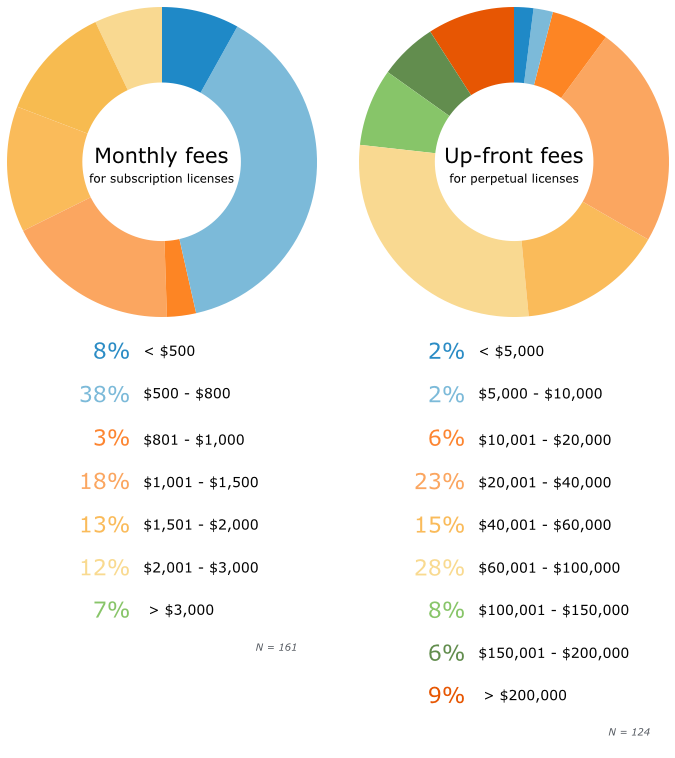
Cloud-based systems licensed on a monthly basis have pricing tiers determined either by number of users or number of warehouses (with an unlimited number of users at each licensed site). Basic monthly subscriptions cost roughly the same, regardless of whether users or warehouses are the unit of pricing.
That said, if you’re looking for a solution that will be deployed in multiple warehouses with multiple users at each one, you may want to evaluate solutions with per-warehouse pricing.
For the sake of simplicity, our charts show per-warehouse rather than per-user pricing for cloud solutions throughout this report. For on-premise solutions, on the other hand, users are the primary pricing unit.
The majority of our buyers aim for a sweet spot of $500 to $800 per warehouse per month for cloud solutions. Only a combined 19 percent are prepared to spend more than $2,000 per month.
Very few buyers budget less than $20,000 for deployment of an on-premise system: Most expect to pay between $20,000 and $100,000. Only one-fifth of our sample (21 percent) is willing to consider a system with a six-figure price tag.
Both on-premise and cloud-based WMS solutions can be expensive to set up, relative to implementation costs in many other software markets. The following chart shows the implementation budgets of the buyers in our sample:
3PL Implementation Budgets
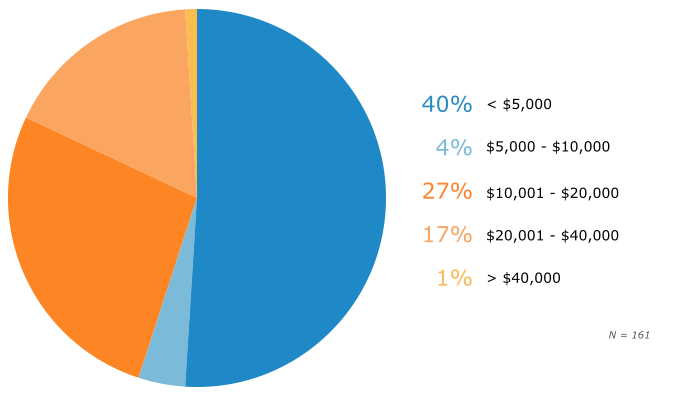
A full 99 percent of buyers want to keep implementation costs under $40,000, and the vast majority (82 percent) aren’t willing to go above $20,000. This makes sense, as most of the buyers we spoke to are from smaller 3PLs: Only 5 percent of our sample represent organizations making over $100 million in annual revenue.
Annual Revenue Has Greatest Impact on WMS Budgets
This leads us to the question of how organizations’ annual revenue impacts their software budgets. After all, just knowing how much a 3PL is willing to pay for a WMS doesn’t tell us much until we cross-reference this metric with data on annual revenue, industry specialization and number of warehouse licenses required.
The following charts break down average estimated WMS budgets for monthly subscriptions, perpetual licenses and implementation costs with the annual revenue brackets of the 3PLs in our sample:
Average Implementation Budgets, by Annual Revenue (in Millions)
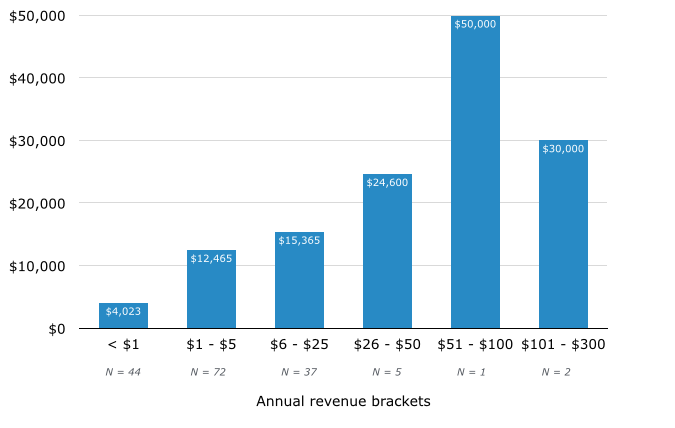
Average Monthly Subscription Budgets (Warehouse/Month), by Annual Revenue (in Millions)
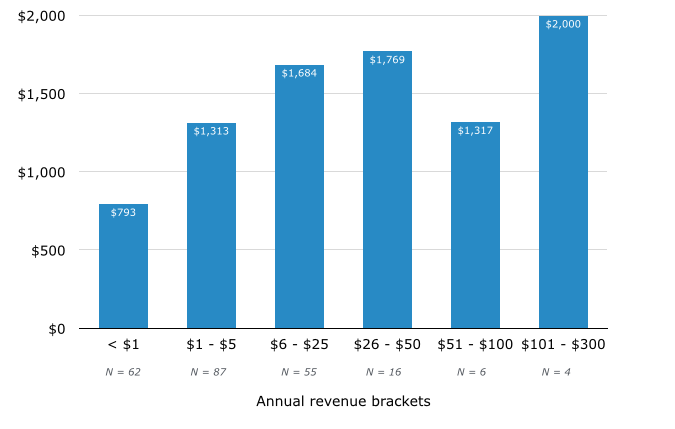
Average Perpetual License Budgets, by Annual Revenue (in Millions)
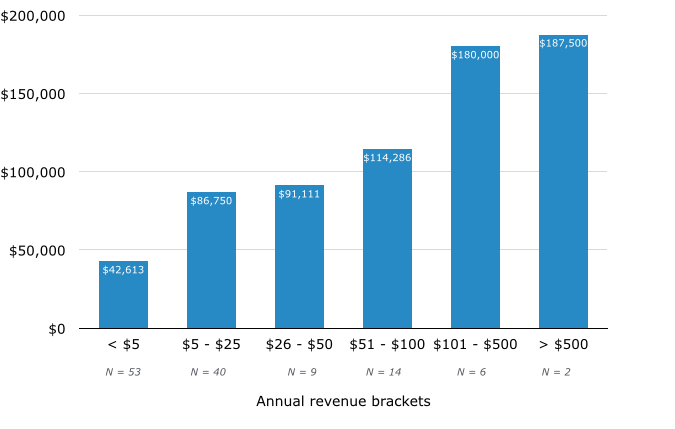
We can spot a number of important trends in the above charts:
Implementation costs below $13,000
Monthly per-warehouse fees for cloud solutions that are less than $1,500
On-premise fees below $90,000
3PLs with annual revenue above $26 million are willing to spend:
$1,300 to $1,750 per warehouse for cloud solutions
Above six figures in perpetual license fees for on-premise solutions (for 3PLs making above $50 million)
3PLs with annual revenue above $100 million expect:
An on-premise WMS system to cost nearly $200,000
Per-warehouse licenses priced around $2,000
Total Number of Warehouses May Impact WMS Budget
For most cloud-based products in other markets, monthly subscription fees are based on the number of users who need access to the system. However, as mentioned earlier, cloud WMS solutions are generally priced according to the number of warehouse licenses needed.
The following charts cross-reference data about the number of warehouses buyers are planning to license with their budgets for WMS software. You can use these numbers as a baseline for budgeting for implementation fees, monthly subscription fees or perpetual license fees, based on the number of warehouses your organization operates.
Monthly Per-Warehouse Subscription Budget, by Number of Warehouses
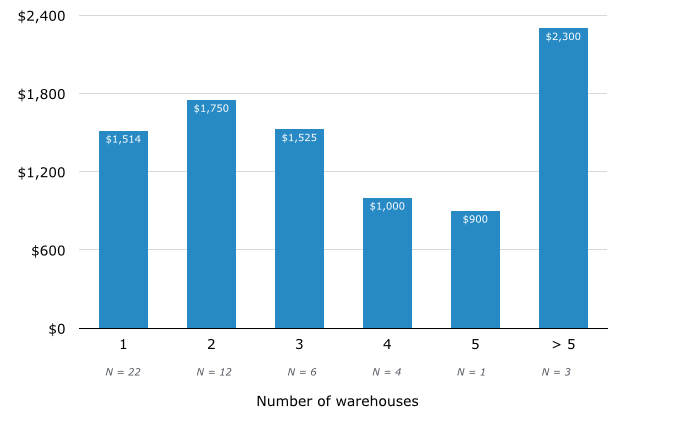
Perpetual License Budget, by Number of Warehouses
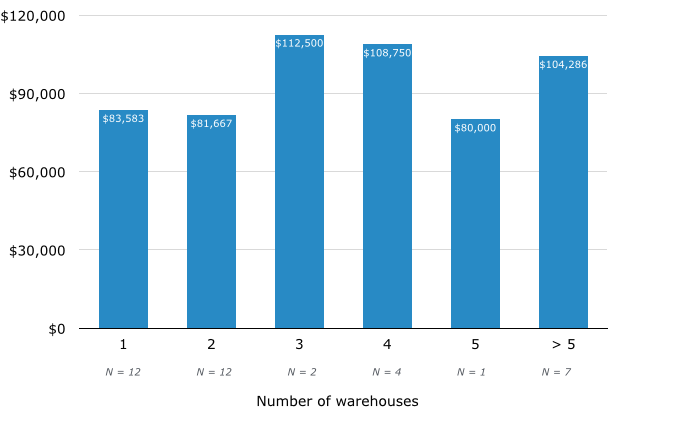
We can see from these charts that annual revenue has a stronger correlation with WMS budgets than number of warehouses. That said, the following trends are evident when we factor in number of warehouses:
Single-warehouse 3PLs expect to pay:
Slightly more in per-warehouse fees for cloud solutions than 3PLs with three to five warehouses
$15,000 or less in implementation fees
3PLs with two to three warehouses are budgeting:
More than $20,000 for implementation fees
More than $100,000 for an on-premise solution (for organizations with three warehouses)
3PLs with four to five warehouses want:
Lower monthly per-warehouse subscription fees than those for 3PLs with one warehouse (this is because the overall costs of cloud solutions can increase dramatically for multi-site deployments)
3PLs with more than five warehouses are willing to spend:
More than $2,000 in average per-warehouse monthly subscription fees
3PLs that want on-premise solutions budget:
At least $80,000 in perpetual license fees for an on-premise system, regardless of how many warehouses they own
Budgets Vary Significantly by Industry Specialization
While some logistics providers handle lots of different kinds of inventory, many tend to specialize in a few types (e.g., food, apparel or chemicals). If you specialize in one or more inventory types, you can use the following charts to budget slightly less for your WMS than competitors in your industry niche—and therefore come out ahead:
Implementation Budget, by Industry Specialization
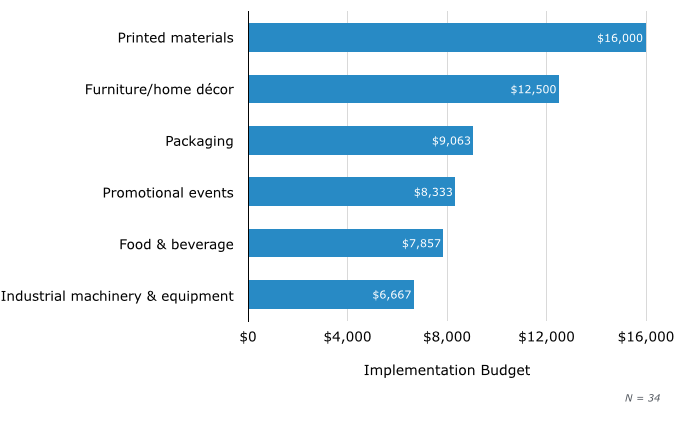
Monthly Per-Warehouse Subscription Budget, by Industry Specialization
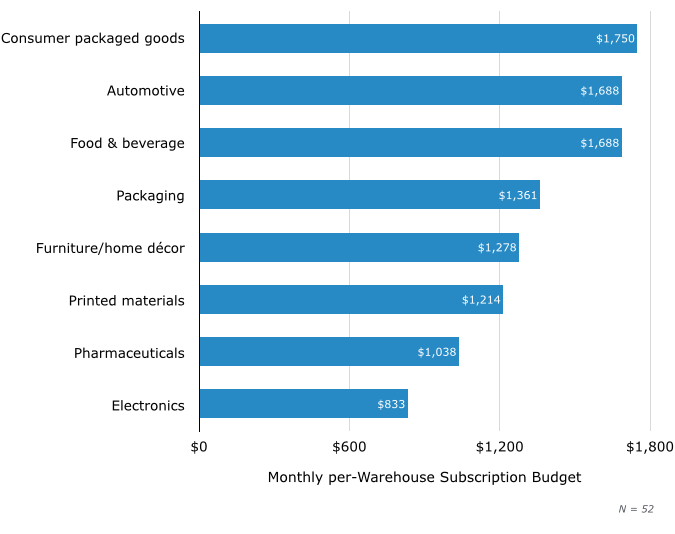
Perpetual License Budget, by Industry Specialization
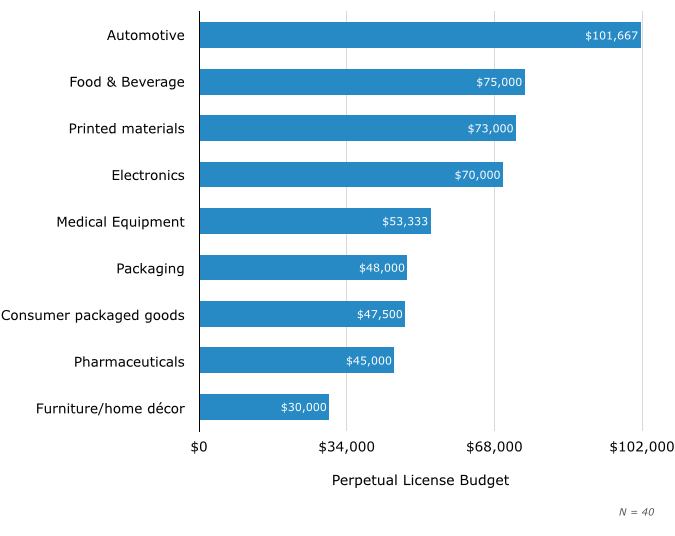
The best way to use these charts is to compare your budget with those of other 3PLs that handle clients in the same industry (for instance, contract packaging). From the above, we can see a few overall trends:
3PLs that handle printing and packaging for clients: Most are willing to spend slightly more than 3PLs in other industries for implementation fees and perpetual license fees.
3PLs that serve the automotive industry: This group budgets far more for on-premise systems than other buyers, due to the necessity of just in sequence (JIS) delivery to automotive manufacturers, as well as to complex inventory control requirements for automobile parts.
3PLs in food and beverage: These buyers budget significantly more for both monthly and perpetual licenses, due to complex lot tracking, recall management and expiration date-based inventory control requirements.
To further assist you in developing a budget for WMS software, we’ve compiled a pricing guide that compares solutions from leading vendors in the market.
If you have comments or would like to obtain access to any of the charts above, please contact danielharris@softwareadvice.com.